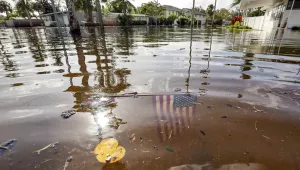Rapid technological advances are making nonstate actors much more capable than they were even a decade ago. Malicious actors like terrorist groups, criminal organizations, and state proxies are increasingly able to threaten American civilians and their interests around the world. At the same time, we are increasingly vulnerable to the emergence of new disease and natural disasters, as vividly shown by the hurricanes of 2017 (Harvey, Irma, and Maria) and the COVID-19 pandemic.
Effectively countering these threats, including by developing and supporting private sector-generated new technological solutions, is a core government responsibility. DHS is the U.S. government’s primary civilian public safety agency and the main source of government funding for nonmilitary development of public safety technologies. Unfortunately, DHS has a poor record of developing new technological solutions to advance its mission and address emerging threats. This article assesses the current situation, identifies lines of research that are urgently needed, and makes recommendations on how DHS can more effectively partner with industry and how new technologies can be quickly seeded.
Bruggeman, Nate and Ben Rohrbaugh. “Closing Critical Gaps that Hinder Homeland Security Technology Innovation.” April 23, 2020







